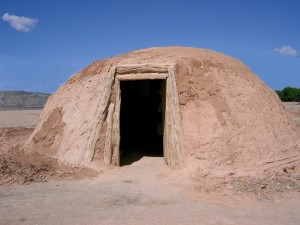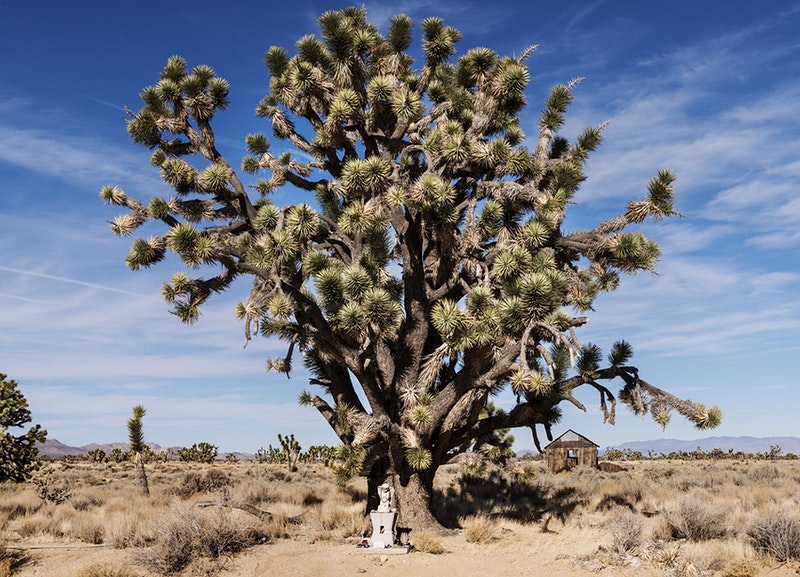THE SECRETS OF THE MOJAVE
(Or, The Conspiracy Against Reality)
Page # 12b
[7th edition]
Compiled by ‘The Group’ — Edited by ‘Branton’
Re-Edited 02,02,2020 for grammar and spelling – ‘Think’
“‘…I have always been intrigued by the unknown and please convey my thanks to Dr. H—- for providing the opportunity to publish my views… I started to investigate the ‘Highway of the Incas‘ when I was a young, curious youth and I have hundreds of witnessed, notarized statements. These documents and tape recordings fill one room of my home. The Incas knew of the tunnel and, although gold was of little value to them, they hid their treasures in these caverns to keep it from the greedy Spanish conquerors.
No one had provided a satisfactory explanation for their mysterious disappearance. There was an empire of several million people that vanished from the surface of the earth. They entered the tunnel and left the Quechua Indians behind. As few Incas have been seen since then, they possibly took up residence in a cavern city or followed the tunnel to the interior of the earth.
“‘…The ‘Highway‘ is the largest of the tunnels and it connects all continents. In addition to the openings in South America, there are entrances in Canada, in British Columbia; in America, you should investigate Mt. Shasta in California and Mt. St. Helena in Oregon. The tunnel is connected with Tibet and another opening in Central Asia. I believe the African entrance is in the Atlas mountains in the north of that continent.
“‘…I also suggest that you explore the ‘highways‘ which have been found in the oceans. These ancient underworld civilizations may be mining our seas!'”
Alexander Von Humboldt, in his volume ‘VIEWS OF NATURE’ (London, Henry G. Bohn, 1850) relates to pp. 412-413 the following account which he collected while in Cuzco, Peru:
“…The son of the Cacique Astorpilca, an interesting and amiable youth of seventeen, conducted us over the ruins of the ancient palace. Though living in the utmost poverty, his imagination was filled with images of the subterranean splendor and the golden treasures which, he assured us, lay hidden beneath the heaps of rubbish over which we were treading.
He told us that one of his ancestors once blind-folded the eyes of his wife, and then, through many intricate passages cut in the rock, led her down into the subterranean gardens of the Inca. There the lady beheld, skillfully imitated in the purest gold, trees laden with leaves and fruit, with birds perched on their branches.
Among other things, she saw Atahuallpa’s gold sedan-chair (UND DE LAS ANDAS) which is alleged to have sunk in the basin of the Baths of Pultamarca.The husband commanded his wife not to touch any of these enchanted treasures, REMINDING HER THAT THE PERIOD FIXED FOR THE RESTORATION OF THE INCA EMPIRE HAD NOT YET ARRIVED, and that whosoever should touch any of the treasures would perish that same night.
(Note: This may or may not be the same as the legendary underground ‘garden cavern’ below the ‘fort’ of Sacsahuaman near Cusco, referred to by other sources. Through that cavern is said to flow a large underground spring, a vast chamber that can only be entered by navigating a confusing labyrinth of underground tunnels.
This account would also seem to tie-in with various rumors that not only the Inca treasures but many of the Incas themselves escaped the Conquistadors through ancient tunnels which led to vast cavern cities built in antediluvian times by the lost ‘Atlantean’ race. There are actually people who claim to have met these subterranean ‘Incas’.
One person who claimed to have been descended from the Incas themselves, told the former editor of AMAZING STORIES magazine Raymond A. Palmer, that he had encountered one of these ancient ‘cousins’ of his who acted as a sentry or guard of an entrance to one of the underground abodes.
This entrance was in the form of a shaft which was situated on the top of a mountain peak hidden somewhere in the Matto Grosso region of Brazil. The sentry, who spoke to the man through a transparent partition near an elevator shaft that descended into the depths, stated that he and his family could enter their abode if they so wished, but that they would have to undergo a decontamination process to remove the radioactive pollutants, contaminants, and infections that their bodies had acquired from a lifetime of living in the outer world – Branton)
“These golden dreams and fancies of the youth,” Humboldt continues, “were founded on recollections and traditions transmitted from remote times. Golden gardens, such as those alluded to (JARDINES O HUERTAS DE ORO), have been described by various writers who allege that they actually saw them; viz., by Cieza de Leon, Parmento, Garcilaso, and other early historians of the Conquista. They are said to have existed beneath the Temple of the Sun at Cuzco, at Caxamarca, and in the lovely valley of Yucay, which was a favorite seat of the sovereign family…
“The son of Astorpilca assured me that underground, a little to the right of the spot on which I then stood, there was a large Datura tree, or Guanto, in full flower, exquisitely made of gold wire and plates of gold and that its branches overspread the Inca’s chair. The morbid faith with which the youth asserted his belief in this fabulous story, made a profound and melancholy impression on me.”
The following account appeared on page 52 of the Nov. 1954 issue of FATE magazine. The article was titled ‘GATE TO THE UNKNOWN‘:
“In March 1954, a French Jesuit priest in Sorata, Bolivia, told a strange story of an exploring trip he had made in the cavern of San Pedro on 20,000 foot Mount Illampu of the Andes chain.
“The cavern must be entered on all fours through a narrow passage which widens after a few yards and leads into an immense cavern filled with stalagmites and stalactites. At one end of the cavern is a subterranean lake.
“The French priest claimed to be the first person to cross to the far end of the lake. After several HOURS of rowing a small boat by artificial light, he related, the cave narrowed and gave way to a trail barred by an enormous gate of wrought iron. The grille, he said, bore all the characteristics of 17th-century Spanish ironwork.
“The priest tried unsuccessfully to break through the barrier. He was eager to see what lay beyond but he had to return to Sorata without solving the mystery.”
The question one might ask in this case is: Did the early Spanish explorers of this cavern go through all the trouble to forge the gate in order to keep someone out, or did they do it to keep some ‘thing‘ in…?
SERIA DOCUMENTAL DEL PERU, a Peruvian newspaper describes an expedition which explorers from Lima University, accompanied by experienced speleologists, undertook in 1923. After entering a tunnel in or near Cuzco, Peru, the explorers lost communication with the point of entry. After 12 days only one member of the expedition, almost starved, returned to the surface. But his report of a confusing labyrinth was so incredible his colleagues declared him mad. Police prohibited entry into the mysterious passage and dynamited the entrance to prevent further loss of life.
In his book ‘THE GOLD OF THE GODS’, Erich von Daniken relates some interesting thoughts concerning an ancient tunnel system that had been discovered below the mountains and jungles of Ecuador, which reportedly consist of straight ‘glazed‘ tunnels with intermittent ‘air shafts‘ that stretch for hundreds of miles. Although he has come under criticism from many researchers for his tendency to embellish certain accounts and twist certain archeological and historical facts in an attempt to support his own theories, some of his research is nevertheless interesting and reliable enough to include here. On pp. 59-60 of this particular work, he stated:
“…I can refute the objection that the tunnel-builders must have ‘betrayed‘ themselves by the enormous quantities of debris excavated while making the tunnels. As I credit them with advanced technology, they were presumably equipped with a THERMAL DRILL of the kind described in DER SPIEGEL for 3 April 1972, which reported it as the latest discovery. The scientists of the U.S. Laboratory for Atomic Research at Los Alamos spent a year and a half developing the thermal drill. It has nothing in common with ordinary drills. The tip of the drill is made of wolfram and heated by a graphite heating element.
There is no longer any waste material from the hole being drilled. The thermal drill melts the rock through which it bores and presses it against the walls, where it cools down. As DER SPIEGEL related, the first test-model bored almost soundlessly through blocks of stone 12 ft. thick. At Los Alamos, they are now planning the construction of a thermal drill that is powered by a mini atomic reactor and eats into the earth like a mole, in the form of an armored vehicle. This drill is intended to pierce the earth’s crust, which is about 25 miles thick (on the average – Branton), and take samples of the molten magma that lies underneath it…”
 A Navaho Indian legend speaks of ancient migrations involving a cavernous realm below the four corners areas. The Hopi’s speak of a similar legend involving an alleged opening, sometimes described as a hill and sometimes as a ‘pond‘, covering the path to the cavern world. The Hopi ‘emergence‘ point is called the ‘Sipapu‘ or ‘Sipapuni‘ and is said to be near the confluence of the Colorado and Little Colorado rivers. According to the Hopi tradition not all of the people who dwelt in the cavern, the world came up with them. Others chose to remain below. As for the Navajos, they state that:
A Navaho Indian legend speaks of ancient migrations involving a cavernous realm below the four corners areas. The Hopi’s speak of a similar legend involving an alleged opening, sometimes described as a hill and sometimes as a ‘pond‘, covering the path to the cavern world. The Hopi ‘emergence‘ point is called the ‘Sipapu‘ or ‘Sipapuni‘ and is said to be near the confluence of the Colorado and Little Colorado rivers. According to the Hopi tradition not all of the people who dwelt in the cavern, the world came up with them. Others chose to remain below. As for the Navajos, they state that:
